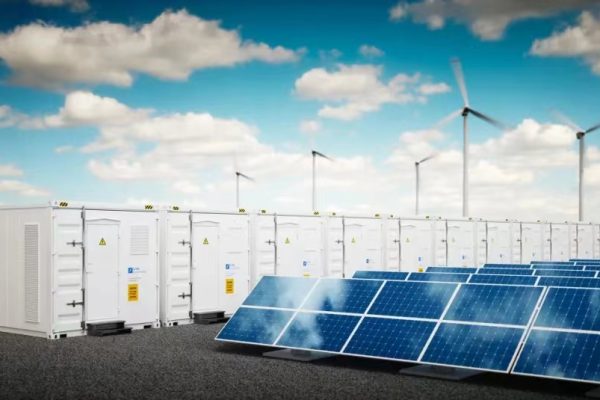In the fast-growing residential energy storage market, two main design philosophies have emerged:
the all-in-one ESS and the modular, component-based system.
Both aim to provide backup power, self-consumption optimization, and energy independence,
but they differ significantly in terms of installation, scalability, serviceability, and cost structure.
Understanding the advantages and trade-offs between these two designs helps buyers, installers, and distributors make the right choice for their business model and target users.
1. What Is an All-in-One Residential ESS?
An all-in-one ESS (Energy Storage System) integrates multiple components into a single enclosure:
- Hybrid inverter
- Battery pack
- Battery management system (BMS)
- Energy management unit (EMS)
- Optional communication/Wi-Fi module and breakers
This pre-assembled system is factory-tested and typically ready to install, requiring only basic wiring to the grid and PV panels.
🔋 Typical Use Cases:
- Residential homes (3–10 kW)
- Small offices or villas
- Off-grid cabins or rural microgrids
🧩 Example Models:
- 5kW + 10kWh all-in-one system
- Wall-mounted lithium ESS
- Stackable tower-style energy cube
⚙️ All-in-one systems are designed for simplicity — ideal for installers who want plug-and-play deployment.
2. What Is a Modular ESS?
A modular ESS separates the major system components into individual units:
- PV inverter
- Battery pack(s)
- BMS and communication box
- Distribution box or breaker cabinet
Each module can be sourced, sized, and upgraded independently, offering maximum flexibility.
⚡ Typical Use Cases:
- Medium-to-large homes (8–20 kW)
- Small commercial or C&I projects
- Installations requiring expansion or customization
🧠 Modular design offers customization and scalability at the cost of longer installation time.
3. Key Comparison Overview
| Feature | All-in-One ESS | Modular System |
|---|---|---|
| Installation | Plug-and-play | Requires wiring and configuration |
| Commissioning Time | 1–2 hours | 4–8 hours |
| Scalability | Limited | High |
| Serviceability | Harder to replace parts | Easy to replace/upgrade modules |
| Cost (initial) | Higher unit price | Lower component price |
| Aesthetic Design | Compact, sleek | Distributed, technical |
| Flexibility | Fixed configuration | Customizable |
| Logistics | Simple shipping | More components |
| Target Market | Residential, quick deployment | Installers, small C&I projects |
🧾 All-in-one is convenience-first; modular is flexibility-first.
4. Advantages of All-in-One ESS
(1) Ease of Installation
All components are pre-tested and pre-configured by the manufacturer.
Installers only connect PV cables, AC output, and communication lines.
- No need for inverter-battery matching
- Simplifies certification (CE, UL, etc.)
- Reduces wiring errors
(2) Compact and Aesthetic
A single integrated enclosure looks modern and professional — especially important for residential interiors or garages.
(3) Quick Commissioning
With factory firmware and calibration, installers can complete setup in less than two hours using a mobile app or display.
(4) Reduced Compatibility Risks
No mismatch between inverter and battery communication — all managed under one BMS and EMS.
🏠 For distributors focusing on small residential systems, all-in-one ESS provides low training cost and high consistency.
5. Limitations of All-in-One ESS
❌ Limited Scalability
Most models allow only small expansions (e.g., +5–10kWh).
Beyond that, voltage and inverter limits apply.
❌ Harder Maintenance
If one internal component fails (e.g., inverter), servicing may require returning the entire unit to the factory.
❌ Fixed Configuration
Buyers can’t freely select battery chemistry, brand, or inverter type.
❌ Higher Replacement Cost
Integrated design means replacing one part (like a fan or relay) often involves replacing the entire ESS enclosure.
⚠️ Great for simplicity — but less suitable for fast-evolving projects or large system growth.
6. Advantages of Modular ESS
(1) High Flexibility
Installers can combine different inverter brands, battery sizes, and communication interfaces (CAN/RS485).
This allows optimization for local conditions or specific client needs.
(2) Easy Maintenance and Upgrades
Each module can be tested or replaced independently, minimizing downtime and repair cost.
(3) Scalable Design
Users can start with a 10kWh battery and expand to 30kWh later without replacing the inverter.
(4) Lower Cost Over Time
While installation is more complex, modular systems can reuse components for future projects.
🔧 Modular setups are favored by experienced installers and system integrators who value control.
7. Limitations of Modular Systems
❌ Complex Installation
Requires technical knowledge for:
- Battery communication setup
- Voltage matching
- Circuit protection coordination
❌ Longer Commissioning Time
Each component must be configured, updated, and tested before system activation.
❌ Appearance
Multiple devices mounted separately may look cluttered in residential interiors.
❌ Certification Complexity
Different brands may require multiple CE, UL, or EMC approvals when exported as a full package.
📦 More freedom also means more responsibility in wiring, setup, and safety compliance.
8. Safety and Protection Considerations
| Category | All-in-One ESS | Modular System |
|---|---|---|
| DC Wiring | Internal, pre-certified | External, installer-managed |
| BMS | Integrated | Separate per battery |
| Isolation | Factory-built | Requires design check |
| Fusing / Breakers | Internal | Installed externally |
| SPD / Grounding | Included | Added manually |
🧯 All-in-one units simplify safety compliance; modular systems demand design verification per IEC 62109 / 62619.
9. Typical Buyer Profiles
🏡 All-in-One Buyer:
- Residential users with limited space
- Installers needing quick deployment
- Distributors wanting ready-to-sell units
- Projects under 10kW
🏭 Modular System Buyer:
- Experienced EPCs or system integrators
- Clients needing >15kWh storage
- Projects with mixed energy sources
- Installers who stock multiple component brands
🧩 Buyer intent should match the system’s complexity and future upgrade plans.
10. Market Trend: Toward Hybrid Flexibility
Recent product innovations blur the line between both categories:
- Stackable “semi-integrated” ESS where inverter + battery are separate but plug directly
- Modular tower systems with pre-configured communication ports
- Hybrid platforms supporting both AC- and DC-coupled expansion
🔋 Future ESS products will likely combine the aesthetics of all-in-one units with the flexibility of modular systems.
11. Export and Logistics Considerations
Shipping:
- All-in-one systems: higher weight per unit; easier handling; single HS code
- Modular systems: lighter per package; multiple declarations required
After-sales:
- All-in-one: central warranty process
- Modular: depends on each component supplier
🚢 For export-oriented distributors, logistics simplicity can outweigh minor flexibility loss.
Choosing between all-in-one and modular ESS depends on your project scale, technical capacity, and business model.
- All-in-One ESS:
Best for fast installation, consistent performance, and professional residential appearance. - Modular Systems:
Best for scalability, flexibility, and advanced integrators who manage custom configurations.
✅ Key Takeaway:
For small-scale residential projects — go all-in-one.
For long-term system growth or C&I clients — choose modular.









